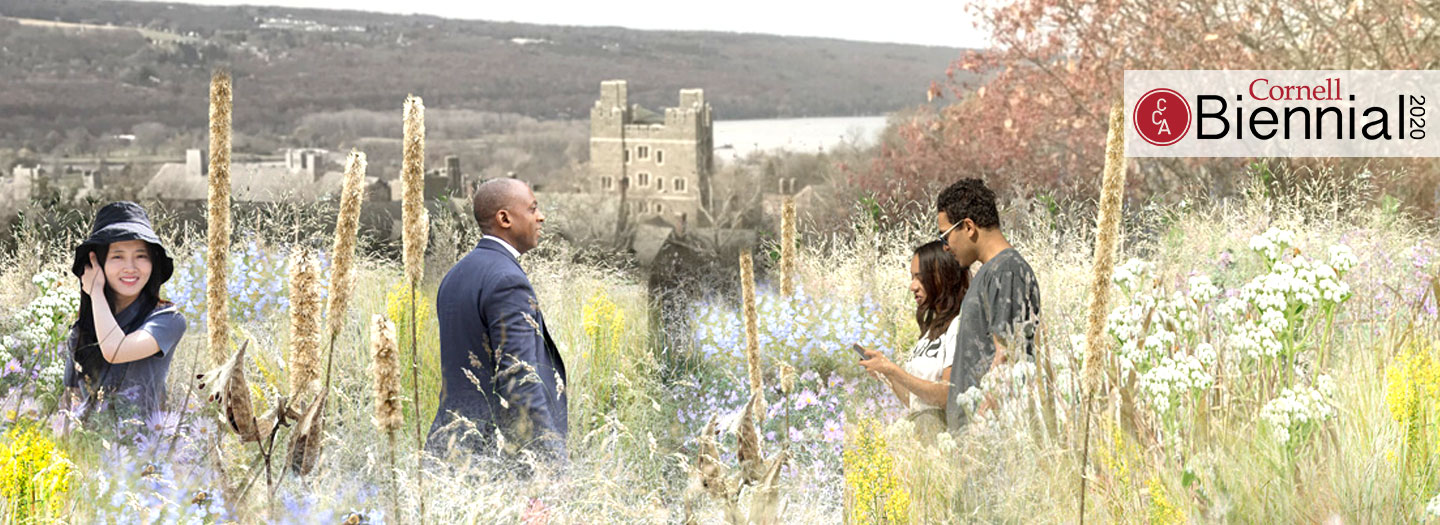
MATT DALLOS
Libe Slope Meadow
Walk the path through the meadow. Grasses stand head high on both sides. Through chaotic plant stems you see fragments of the Johnson Museum, the clock tower, McGraw, Cayuga Lake. There’s a medley of wildflowers and grasses planted informally yet deliberately. The plants evoke the feeling of wild spaces typically found on the leftover, forgotten fringes of our built environment. You’re abruptly immersed in the interactions between seasons, wind, rain and snow and frost and sunlight, soil, insects, and birds; on your walk to class, to a meeting, to the library, you’re immersed in the unpredictable and precarious.
Swarm here is literal: non-human beings will arrive at the meadow seeking shelter and food. But swarm here is also more metaphorical: this is a site for humans to gather, to question our interactions with the natural world in this era of the Sixth Extinction and climate change. This isn’t a garden as horticultural decoration. It’s a garden as land art. The meadow is meant to affect the way people imagine what their world might be. The meadow is wildness designed, which speaks to the tangled issues of ecologies, boundaries, and cultures in the Anthropocene.
Libe Slope Meadow reaches its apogee of yearly growth in August: lush grasses, swaying wildflowers. Into September and October, seed pods dry, leaving dabs of brown and gray among the greens that linger. Fall and winter, the dormant plants stand, asserting the wild form of the meadow even after all green has turned tawny. The dominant colors are now straw, rust, and charcoal. In this way, the garden is more about decay and senescence and the variability of seasonal form through time than it is about the spectacle of pretty flowers. In March, everything is cut to the ground to nourish summer growth. Spring sees the meadow waking up. Sprouts push through the remnants of last year’s growth. The meadow inserts the processes of growth, change, and decay into the daily lives of everyone who passes near Libe Slope. The meadow is an intervention of hope, a call to see potential in the uncertain and unexpected.
- Spring 2021
- Libe Slope
Matt Dallos (US)
Matt Dallos’ plant-focused landscape work explores the concept of wildness and how to foreground it in our everyday built environment. He received an MS in landscape architecture from Penn State and is currently a PhD candidate in history at Cornell University.